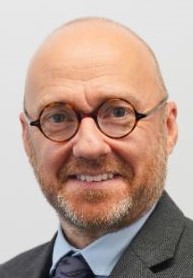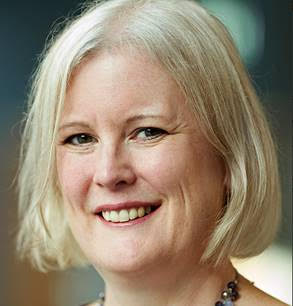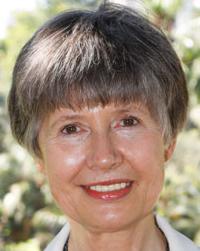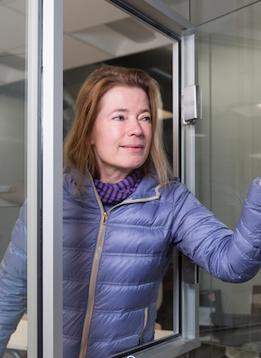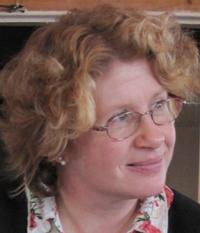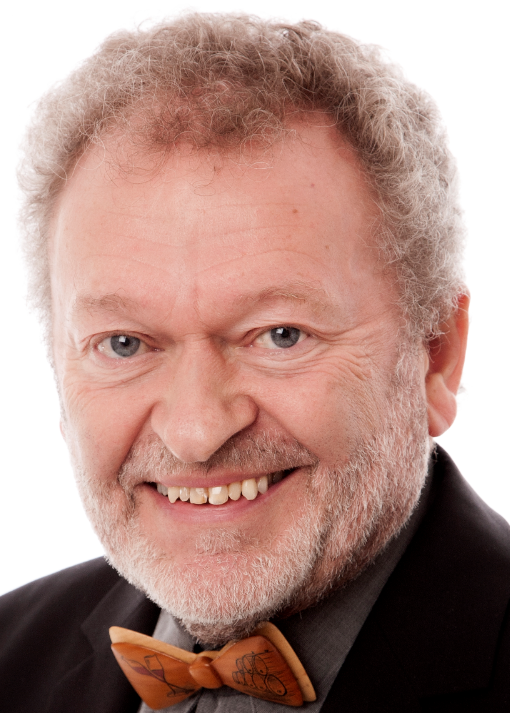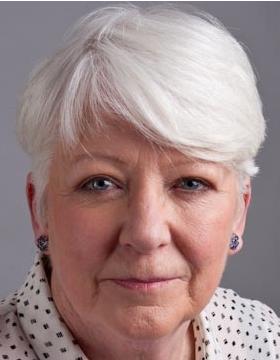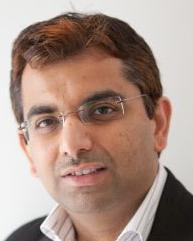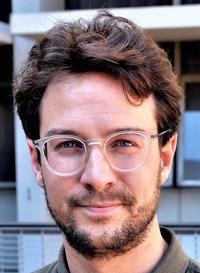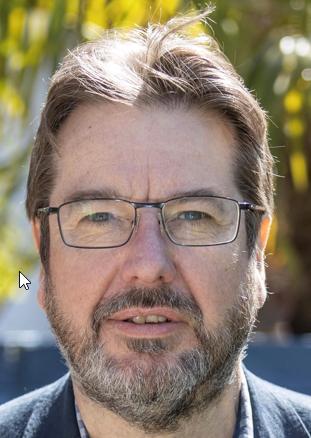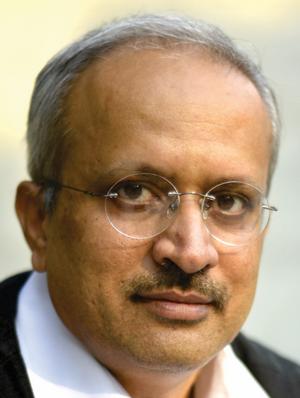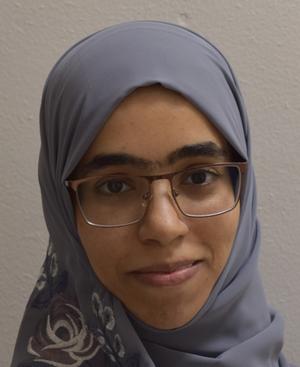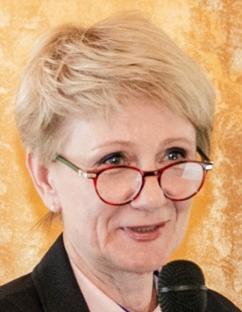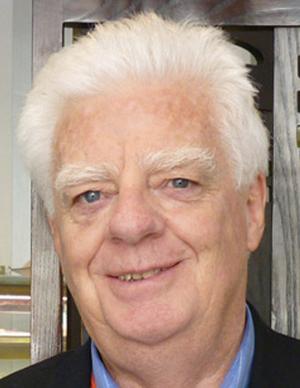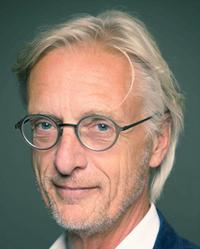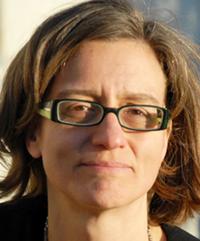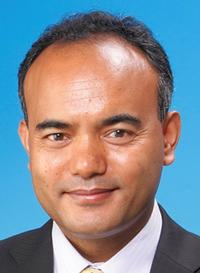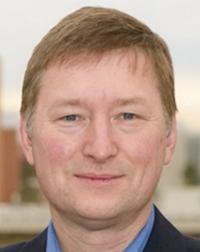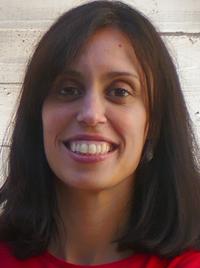Keynotes
-
CATE 22 – Keynote Speaker and Workshop Leaders
Ventilating for a safer future:
Patrick Harvie spent his childhood in Dumbarton, and attended Dumbarton Academy followed by Manchester Metropolitan University.
Before becoming an MSP he worked for a sexual health charity as an LGBT youth worker in Glasgow, and was involved in the campaign to repeal Section 28 during the Scottish Parliament’s first session.
Patrick was elected as an MSP for the Glasgow region in 2003, has served as Convenor of the Transport, Infrastructure and Climate Change Committee during session 3, and as Co-Leader or Co-Convenor of the Scottish Green Party since 2008. He was appointed Minister for Zero Carbon Buildings, Active Travel and Tenants’ Rights in August 2021.
Catherine Noakes OBE, FREng, FIMechE is Professor of Environmental Engineering for Buildings at the University of Leeds with a BEng in mathematical engineering and a PhD from the School of Mechanical Engineering there. In 2010 Noakes was made Director of the Pathogen Control Research Institute. Noakes is a member of the Engineering and Physical Sciences Research Council (EPSRC) Centre for Doctoral Training in Aerosol Science. She serves on the editorial board of the Elsevier journal Building and Environment and the Wiley journal Indoor Air. In 2016 Noakes started the Low-Energy Ventilation Network (LEVN), a team of people who look to better understand building physics and the impacts of building environments on the cognitive performance of people inside.[12] She serves as Deputy Director of the Leeds Institute of Fluid Dynamics, and co-directs their Centre for Doctoral Training. From April 2020 she served on the UK Scientific Advisory Group for Emergencies (SAGE) for which work she received a Special Presidential Award from the Royal Academy of Engineering for Pandemic Service.
Title of her Talk: Infection resilient buildings: understanding risks to inform policy, design and management of the built environment
Lidia Morawska is Distinguished Professor at the Queensland University of Technology in Brisbane, Australia, and the Director of the International Laboratory for Air Quality and Health at QUT, which is a Collaborating Centre of the World Health Organization. Lidia also holds positions of Adjunct Professor, Institute for Environmental and Climate Research (ECI), Jinan University, Guangzhou, China, of Vice-Chancellor Fellow, Global Centre for Clean Air Research (GCARE), University of Surrey, UK. She is a co-director of the Australia-China Centre for Air Quality Science and Management She conducts fundamental and applied research in the interdisciplinary field of air quality and its impact on human health and the environment, with a specific focus on science of airborne particulate matter. She is a physicist and received her doctorate at the Jagiellonian University, Krakow. An author of over nine hundred journal papers, book chapters and refereed conference papers, Lidia has been involved at the executive level with a number of relevant national and international professional bodies, is a member of the Australian Academy of Science and a recipient of numerous scientific awards.
Yuguo Li is a Chair Professor of Building Environment, and Honorary Professor of School of Public Health, The University of Hong Kong. With a fluid dynamics background, he has a particular research interest on how air moves in a broad length scale of natural and human-made spaces, including lungs, rooms, buildings and cities; and associated transport of heat, moisture and aerosols that impacts on human health and comfort. His team has been studying the mechanisms of transmission routes, i.e. short- and long-range airborne transmission, surface touch transmission and large droplet transmission of respiratory and enteric transmission such as influenza, coronaviruses (SARS, MERS) and noroviruses. The study carried out in his team defined concepts such as short-range aerosol transmission, surface touch network, particle transfer due to touch, and city ventilation. Their work led to the findings of the roles played by airflow and ventilation in the 2003 Amoy Gardens SARS outbreak and in some SARS-CoV-2 outbreaks in 2020.
He currently serves as Editor-in-Chief of Indoor Air. He is a member of the WHO COVID-19 IPC guidance development group of experts and a member of Environment and Engineering Control Expert Advisory Panel (ECAP) for COVID-19
Abstract: Stopping transmission can stop a pandemic. More than 16 months into the COVID-19 pandemic, the world leading health authorities have finally recognized the possible airborne and short-range inhalation routes. It is now known that ventilation impacts on both short- and long-range inhalation transmission (Li et al. 2021a), however the required ventilation rate(s) for infection control is still an on-going research topic. The speaker will summarize what they have learned from studying 20 SARS-CoV-2 outbreaks, explore how a continuum short- and long-range inhalation model can be used to reveal the need for ventilation, and discuss how we can ensure a safe future by ventilating better our indoor spaces (Li et al., 2021b).
- Li, Y., Cheng, P. and Jia, W., 2021a. Poor ventilation worsens short‐range airborne transmission of respiratory infection. Indoor air.
- Li Y, Nazaroff WW, Bahnfleth W, Wargocki P and Zhang Y. 2021b. The COVID‐19 pandemic is a global indoor air crisis that should lead to change: A message commemorating 30 years of Indoor Air. Indoor Air.
Philomena Bluyssen: Prof. dr. Philomena M. Bluyssen received her Master’s of building engineering in 1986 at the Technical University of Eindhoven, and in 1990 her PhD at the Technical University of Denmark with a thesis on ‘Air quality evaluated by a trained panel’. After working for more than twenty years as researcher with TNO, where she coordinated among others several European projects on optimisation of Indoor environment quality and energy use, she was appointed full Professor Indoor Environment in 2012 at the Faculty of Architecture and the Built Environment, of the Delft University of Technology. At the TU Delft she initiated the SenseLab, a semi-lab environment sponsored by 25 companies and organisations, in which she recently performed research on airborne transmission of exhaled aerosols. In 2019 Bluyssen was appointed Visiting Professor at Feng Chia University in Taichung, Taiwan. Prof. Bluyssen is member of the (inter)national organisations TVVL, REVHA, ASHRAE, ISIAQ and CIB. She is co-founder of the Dutch ISIAQ chapter and was the first president of ISIAQ.nl. She has contributed and/or authored to more than 275 publications, and has been invited as guest, distinguished or keynote lecturer at several conferences and universities. For ‘The Indoor Environment Handbook: How to make buildings healthy and comfortable’, she received the Choice Outstanding Academic Titles of 2010 Award.’ Her book ‘The Healthy Indoor Environment – How to assess occupants’ wellbeing in buildings’, received the IDEC 2016 Book Award.
Abstract: Since the first outbreaks of COVID-19, the question of how to minimize transmission of SARS-CoV-2 indoors has become one of paramount importance. SARS-CoV-2 has three possible transmission routes: 1) direct transmission of virus carrying droplets between people in close proximity, by coughing, sneezing or talking; 2) indirect transmission via deposited, or transmitted, infectious droplets via surfaces; 3) airborne transmission through virus carrying, small, airborne droplets (also named ‘aerosols’) emanating from infected individuals. As airborne transmission is now known to be the major source of transmissions, the background to airborne transmission research is outlined and measures to reduce airborne transmission are discussed. She reaffirms the urgency of providing pathogen safe, and comfortable buildings in the future. This will require both a better understanding of how pathogens spread within buildings, and reliable and resilient new ways of ventilating indoor spaces that are flexible, affordable, efficient and effective. It is clear that the question is not only ‘What ventilation rates, and strategies, are required to protect building occupants against infection transmission?’, but also ‘How would it be best to ventilate for different situations’?
Stephanie J Dancer is a medical microbiologist in NHS Lanarkshire and Professor of Microbiology at Edinburgh Napier University in Scotland. She edited the Journal of Hospital Infection for over 20 years, five of them as editor-in-chief, and now edits for Infection, Disease & Health and International Journal of Antimicrobial Agents. She trained at St. Bartholomew’s Hospital in London followed by postgraduate studies at Guy’s Hospital, where she gained a thesis on the epidemiology and biochemistry of toxin-producing staphylococci. She has worked and travelled all over the world, including the Canadian High Arctic, where she resuscitated 30,000-year-old organisms from glacial ice. She spent six years as Infection Control Officer for Argyll before moving to Health Protection Scotland as their inaugural microbiologist (2002-5). There, she set up MRSA surveillance for Scotland, evaluated real-time PCR for MRSA screening and helped establish the Scottish Microbiology Forum. She has been a member of national working groups on antibiotic prescribing, MRSA and hospital cleaning, and is a current or recent member of NHS Scotland Decontamination; UK NICE (infection control & antimicrobial prescribing); UK HTA (screening and diagnostics); ESCMID groups on infection control, MRSA & multi-resistant Gram-negative bacilli; and 2013 ECCMID conference committee. During the COVID-19 pandemic, she advised DEFRA on surface cleaning and hygiene and collaborated with an international group of virologists, physicists, ventilation engineers and aerosol scientists on airborne spread of SARS-CoV-2. She has published books, book chapters and around 200 papers in peer-reviewed journals on hospital cleaning, antimicrobial management, infection control and SARS-CoV-2. At present, she balances editorial duties with research and teaching, specifically antimicrobial stewardship and environmental control of hospital pathogens.
Abstract: Professor Dancer’s talk on Healthcare-acquired clusters of COVID-19 across multiple wards in a Scottish health board Healthcare-acquired COVID-19 has been an additional burden on hospitals managing increasing numbers of patients with SARS-CoV-2. One acute hospital among three in a Scottish health board experienced an unexpected surge of COVID-19 clusters in December 2020, for which there was no apparent explanation. An investigation was launched in order to elicit total numbers of staff and patients involved in the clusters in all three hospitals and also in care homes across the health board. Daily surveillance provided baseline data, along with patient boarding, community infection rates and outdoor temperatures from October 2020 to March 2021. Selected SARS-CoV-2 strains were genotyped. The investigation identified nearly 20 COVID-19 clusters at one hospital during the six-month study, lasting 2-42 days (average: 5 days). COVID-19 clusters in the other two hospitals reflected community infection rates. An outbreak management team implemented a control package that included enhanced ventilation. Forty clusters occurred in all three hospitals before a January window opening policy, after which there were three during the remainder of the study. Mortality rates among patients decreased after implementation of the COVID-19 control package. This presentation will describe events in one health board due to COVID-19 and offer some practical recommendations for controlling similar outbreaks of respiratory infection in the future.
- Dancer SJ, Cormack K, Loh M, Coulombe C, Thomas L, Pravinkumar SJ, Kasengele K, King MF, Keaney J. (2021). Healthcare-acquired clusters of COVID-19 across multiple wards in a Scottish health board, J Hosp Infect doi: 10.1016/j.jhin.2021.11.019.
Clive Beggs is a bio-engineer and physiologist, and is Emeritus Professor of Applied Physiology at Leeds Beckett University in the UK. He has worked for many years on the transmission of infectious diseases and also in neurology, with several leading research groups around the world. He has a particular interest in the biophysics associated with infectious disease transmission and pioneered work at the universities of Leeds and Bradford on the use of air cleaning technologies to mitigate the transmission of infection in buildings. He is also an expert in machine learning and data science, which he regularly uses to gain novel insights when undertaking clinical research. Clive is currently working with research teams at Queen Mary University of London and Addenbrookes Hospital, Cambridge, investigating the use of air cleaning and disinfection technologies to mitigate the transmission of the SARS-CoV-2 virus in schools and hospitals. He also advises the Department of Health and Social Care (DHSC) and the Department for Education (DfE) in the UK on matters relating the COVID-19, as well as acting as a consultant to various corporate organizations.
Subject of Talk: Particulate transport and air filtration on a medical ward: A natural experiment
Peter Holzer: Peter Holzer holds a degree in Mechanical Engineering (1994) and a doctorate in Architecture (2009), both at Technical University of Vienna. He works both in industry and academia where he worked in the Department of Building and Environment at Danube University Krems from 1996 to 2012 as research associate then head of department. He still teaches Building Physics and Building Services at the University of Applied Sciences, Campus Wien. Since 2011 he has been Managing Director of the Vienna branch of the IPJ Ingenieurbüro P. Jung, a consultancy office in building physics, indoor comfort and building energy systems and since 2013 is a shareholder of the Institute of Building Research & Innovation, a research entity specialized on sustainability of buildings. He is currently leading the IEA EBC Annex 80 on Resilient cooling of Buildings and has designed the extraordinary Austrian Pavilion at the Dubai Expo using highly innovative cooling and energy storage systems.
Bjarne W. Olesen: is a Professor at the Technical University of Denmark, with a Master’s degree in Civil Engineering and a Ph.D. from the Laboratory of Heating and Air Conditioning at Technical University of Denmark where he was a research scientist from 1972-1990. He is part-time affiliate as product manager at Brüel & Kjaer from 1978-1992 and a senior research scientist at the College of Architecture, Virginia Tech. from 1992-1993. From 1993 to 2004 he was head of Research & Development at UPONOR-VELTA GmbH KG & Co., Norderstedt, Germany. Since January 2004 he has been a full professor of Indoor Environment & Energy at the Technical University of Denmark and past Director of the International Center for Indoor Environment and Energy, Technical University of Denmark. Awarded the Ralph Nevins Award (1982), Distinguish Service Award (1997), Fellow Award (2001) and Exceptional Service Award (2006) from ASHRAE. Honorary member of AICARR (Italy), SHASE (Japan) and VDI-TGA (Germany). Chivalric Order of Dannebrog, from the Danish Queen (2012). Doctor Honoris Causa, Slovak University of Technology. He was ASHRAE President 2017-18 being awarded the Andrew T. Boggs Award by ASHRAE in 202 and the Donald Bahnfleth Environmental Health Award-ASHRAE in 2021. He is active in several ASHRAE-CEN-ISO-DIN standard committees regarding indoor environment and energy performance of buildings and HVAC systems. Has published more than 400 papers including more than 90 in peer reviewed journals.
Sue Roaf is Emeritus Professor of Architectural Engineering at Heriot Watt University in Edinburgh. She is an award winning author, teacher, architect and solar energy pioneer. Her 22 books includes: Ecohouse: A Design Guide; Adapting Buildings and Cites for Climate Change; Closing the Loop: Benchmarks for Sustainable Buildings, Energy Efficient Buildings, Adaptive Thermal Comfort and The Ice-Houses of Britain. She Chaired PLEA 2017 conference promoting natural energy buildings (www.plea2017.net), has Co-Chaired the Windsor Conferences on Comfort 1994 – 2020 (www.windsorconference.com) and the Comfort at the Extremes Conference in Dubai 2019 (www.comfortattheextremes.com). Her presentation on Comfort Justice at COP26 is available on: https://www.youtube.com/watch?v=mbsdb70e4SM
Rajat Gupta BArch MSc PhD FRSA, is Director of the multi-disciplinary Oxford Institute for Sustainable Development (OISD) and Low Carbon Building Research Group at Oxford Brookes University (Oxford, UK). He holds a senior professorial chair in sustainable architecture and climate change. Rajat’s research interests lie in evaluating building performance from a socio-technical perspective, smart local energy systems, local energy mapping, scaling up energy retrofits and tackling summertime overheating in homes and care settings. As Principal Investigator (PI) he has won over £13 million in research grants to investigate these subjects. See – https://www.brookes.ac.uk/templates/pages/staff.aspx?uid=p0020979
Fergus Nicol Fergus is a Physicist and an Emeritus and Honorary Professor at several Universities including Heriot Watt University, London Metropolitan and Oxford Brookes Universities. He convenes NCEUB, the Network for Comfort and Energy use in Buildings and helped organise their regular international Windsor Conferences (see: www.windsorconference.com). He is best known for his work in human thermal comfort, principally the ‘adaptive’ approach. He has run a number of projects including the EU project Smart Controls and Thermal Comfort (SCATS) which is the basis of a new European Standard (EN15251) for comfort. Fergus helped develop the Masters course in energy efficient and sustainable buildings. He has co-authored numerous journal articles and other publications including the comfort chapter in CIBSE Guide A Fergus convenes the Network for Comfort and Energy use in Buildings and is organising their Conference on Adapting to Change: New Thinking on Comfort in Windsor in April 2010. He is a member of the CIBSE task force on overheating in buildings.
Stefano Schiavon PhD, is Associate Professor of Architecture and Civil and Environmental Engineering at UC Berkeley and Associate Director of CEDR. Stefano’s research is focused on finding ways to reduce energy consumption in buildings while improving occupant health, well-being and productivity. Stefano has researched sustainable architecture, air conditioning and satisfaction. He has experience in laboratory measurements, post-occupancy evaluation, and building performance simulation. Stefano is involved in the Center for the Built Environment and the SinBerBEST project. He earned a PhD in Energy Engineering (2008) and an MS in Mechanical Engineering (2005) with honors from the University of Padova, Italy. He received the 2010 REHVA Young Scientist Award and 2013 ASHRAE Ralph Nevins Physiology and Human Environment Award. He won 3 best papers awards in 2018 from the Journal Building and Environment.
Abstract: Cooling people with air movement, a sustainable and affordable alternative to AC
We spend most of our time in built spaces that substantially affect our health, well-being, and productivity. Conditioning the built environment has a large influence on climate change, most of which comes from the energy used to create indoor comfort. The need for cooling has been increasing globally, with most of it happening in tropical countries because of their economic and demographic growth. How can we enhance occupant satisfaction without increasing buildings’ environmental impact even further? I will present strategies to reduce the impact of air conditioning and I will show why electric fans can be both an alternative to and augmentation of air conditioning. In a remarkable number of ways, they have the potential to simultaneously reduce energy use and increase thermal comfort. I will also show that the PMV/PPD thermal comfort model has low prediction accuracy and we do not have enough evidence to justify narrow indoor temperature ranges for thermal comfort or work performance reasons. I will end the presentation by making a case on how electric fans in many situations can protect people during heatwaves.
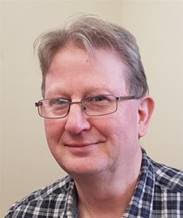
Gary J Raw BA, DPhil, CPsychol, AFBPsS is an environmental psychologist with 35 years of experience in research, analysis and consultancy – in universities, Government and the private sector. His main field of expertise is the behaviour and perceptions of people in buildings, including energy use, indoor environmental quality, health and comfort. He has international recognition for research and many publications on domestic energy use, the health and comfort effects of the indoor environment, the design of occupant surveys and interpretation of research. Gary was a Founder Member of the International Society for Indoor Air Quality & Climate (ISIAQ) and was elected to the International Academy of Indoor Air Sciences – now the ISIAQ Academy of Fellows. He currently works as an independent consultant.
Subject of Talk: Assessment methods and the way in which thermal comfort (and attempts to achieve it) interact with other drivers of behaviour
Dr Nigel Oseland is an environmental psychologist, workplace strategist, change manager, researcher, international speaker and published author with 11 years research and 23 years workplace consulting experience. Nigel draws on his psychology background and his own research to advise occupiers on how to redefine their workstyles and rethink their workplace to create working environments that enhance individual and organisational performance, delivering maximum benefit. He specialises in strategic briefing and change management to help create workplaces that meet psychological needs and facilitate collaboration, creativity and concentration. Nigel has advised corporate businesses, public sector bodies and educational institutions in the UK and throughout EMEA. Before setting up his own workplace consulting practice, Nigel was a researcher at the Building Research Establishment and completed his doctorate with the School of Engineering at Cranfield University. He then went on to become a workplace consultant at Johnson Controls (within their facilities management business), Swanke Hayden Connell Architects and specialist workplace practices AMA Alexi Marmot Associates and DEGW. When it comes to advising on workplace design and planning, Nigel has an all-round experience.
Rajan Rawal is a CRDF Professor at CEPT University and Senior Advisor of “Centre for Advanced Studies in Building Science and Energy” (CARBSE) at CEPT Research and Development Foundation (CRDF). He teaches energy-efficient built habitat, thermal comfort, energy modelling, and building energy policy. His work emphasis is on ‘Energy Performance of Human Habitat’ and ‘Architectural and Building Science Education’. His current focus of the work is on Passive Design Strategies, Net Zero Energy Buildings and Communities, Personal Thermal Comfort Systems and Practices of Adaptive Thermal Comfort Models. He was instrumental in the development of adaptive thermal comfort standards in India based on ASHRAE 55, design and construction of NZEB, a thermal–optical properties database of building construction, and he has hugely impacted educational and research programs within university and at the national level, that is unparallelled in India. He has won many awards and served on many national and international boards, committees and networks and is part of the editorial board of three leading journals, and has published widely in papers, books and projects reports.
Title of his talk: Building Climate resilience and heat wave alleviate strategies in Indian Cities
Sukumar Natarajan Sukumar Natarajan is Associate Professor of Environmental Design at the University of Bath and an award-winning teacher and researcher, with degrees from the universities of Cambridge and Manchester. His research has focused on the design and management of future-facing, healthy and comfortable low-carbon buildings, subjects that lie at the intersection of three key global grand challenges: climate change, energy security and health. Recent multi-million projects he has been involved in as investigator and co-investigator include the Newton Fund “Zero Peak Energy Building Design for India” which is transforming how buildings are designed and built in India to be climate resilient and the GCRF funded “Healthy Housing for the Displaced” where his work has now become the standard for the assessment of thermal comfort refugee camps and tested with 27 international experts in humanitarian relief covering 15 at-risk countries.
Hanan Al-Khatri is an assistant professor at the Department of Civil & Architectural Engineering, College of Engineering, Sultan Qaboos University. She holds a BEng in Architectural Engineering from Sultan Qaboos University, MSc in Renewable Energy & Architecture and PhD Architecture (Science) from the University of Nottingham, UK. She was worked as a junior architect on the Salalah International Airport project and thirteen years ago was appointed as the first Omani female academic in the College of Engineering, Sultan Qaboos University, teaching undergraduate and postgraduate courses. Her research focuses on thermal comfort and people’s interaction with the built environment on which topic she is currentlyinvolved in several research projects. She has recently co-authored a chapter in “Advancements in Sustainable Architectural and Energy Efficiency” published by IGI Global and is an Associate Editor at The Journal of Engineering Research, [TJER], and a Review Editor at Frontiers in Built Environment, Indoor Environment section. She coordinated and co-chaired CATE 21, the second International Conference on Comfort At The Extremes, a spin-off conference from the prestigious Windsor Conferences on comfort (www.cate21.com).
Elena A. Grigorieva is the leading researcher in the laboratory of regional social-economical systems, Institute for Complex Analysis of Regional Problems, Russian Academy of Sciences, Far Eastern Branch (ICARP FEB RAS), Birobidzhan, Russian Federation. She graduated as a Specialist with Honors in Meteorology, Russian State Hydrometeorological University, St.-Petersburg, Russia. Her PhD is in Environmental Science from the Far-Eastern Federal University, Vladivostok, Russia. Elena is the Associate Professor in Ecology (Environmental Sciences). Her research interests cover a number of themes in biometeorology, which include: Climate and human health, Environmental Health Threats by Climate, Human thermal acclimatization in extreme climates, Human bioclimatic indices, Urban climate, Climate and Tourism, Climate and Agriculture. A renown bioclimatologist, she is an active member (2005–present) and Vice President (2014–2017, 2017–2020, and 2020–2023) of the International Society of Biometeorology (ISB), and member of ‘Climate, Tourism and Recreation Commission’, and ‘Climate and Human Health Commission’ in ISB. Elena is a member of ‘Women in Science and Engineering Committee’ in ‘Association of Academies and Scientific Societies in Asia’ (2017–2019, 2019–2021) and serves as Editorial Board Member in “Regional Problems”, ICARP FEB RAS (2002–present time), Editorial Board Member in “International Journal of Biometeorology”, Springer (since 2020), Topic Editor in Journal Topics Board of scientific journal “Climate”, MDPI (since 2020).
Roger Curtis is a Chartered Building Surveyor with Building Conservation Accreditation working in the field of historic and traditional building repair and upgrade. After military experience in the Royal Navy he completed a Masters in Building Conservation in 2003 and following time as a building contractor joined Historic Environment Scotland in 2006. He is now responsible for managing the Technical Research Programme. Work strands include trials and demonstration work relating to traditional materials and technologies, energy efficiency, sustainability, climate change adaptation and the circular economy. He commissions and manages the technical publications for HES and lectures to a variety of professional and academic audiences on technical and historic topics concerning the built environment. A Fellow of the Society of Antiquaries of Scotland he is involved with several local history initiatives in the Scottish Borders.
Talk Title: Flow and form – traditional ways of ventilating buildings and their importance in a low carbon future
Alan Kennedy-Asser is a research associate in climate science based at the University of Bristol. Since 2019, Alan has focussed on summer heat extremes in the UK and how these are projected to change in the Met Office’s latest climate projections (UKCP18). He is currently working on the UK Climate Resilience Program funded OpenCLIM project with colleagues at the University of East Anglia, (https://www.ukclimateresilience.org/projects/openclim-open-climate-impacts-modelling-framework/) University of Bristol, Newcastle University and the Centre for Ecology and Hydrology. The project is developing a framework of inter-connected climate impacts models for a range of sectors including heat stress/health, flooding, agriculture, water supply and biodiversity. Alan will present an overview of the latest results from the OpenCLIM project, as well as the 3rd Climate Change Risk Assessment (CCRA3) and other projects from the UK Climate Resilience Program.
Terry Williamson was educated in engineering and architecture in Australia. He is currently adjunct Professor in the School of Architecture and Built Environment, The University of Adelaide, Australia. Since “retiring” at the end of 2011 he has maintained an active role in the supervision of graduate students and research, including as a Chief Investigator on two Australian Research Council projects examining the comfort, health and wellbeing of older people. Over a long career he has conducted research in range of related areas including adaptive thermal comfort, building energy efficiency, sustainable building design, building performance computer simulation, design for climate and methods of life-cycle assessment. He has provided advice to Commonwealth and State /Territory Governments (SA, Victoria, NSW & NT), Local Governments and a range of industry/professional bodies such as the Australian Building Codes Board.
Wouter D. van Marken Lichtenbelt is Professor of Ecological Energetics and Health at the School for Nutrition and Translational Research in Metabolism (NUTRIM) at Maastricht University in The Netherlands. He heads the research group on Thermophysiology and Metabolism there (TherMU – https://www.maastrichtuniversity.nl/search?keyword=TherMU) covering fundamental research fields dealing with the effects of environmental temperatures on physiology and behaviors, ranging from the indoor environments in western populations to those experienced in extreme conditions in Siberia. Study results have shown the significant beneficial effects of excursions outside the thermoneutral zone on metabolic and cardiovascular health and resilience to thermal extremes. The applied aspects of their research put emphases on how daily indoor environmental conditions relate to thermal comfort, behavior, health and prevention of the metabolic syndrome. His group searches for an optimal mix of different lifestyles and environmental factors to create healthy sustainable indoor environments.
Paul O’Sullivan is a Chartered Engineering and Lecturer in Energy Engineering at MTU where he also Co-leads the MeSSO Research Group. He holds Engineering Degrees from Queens University Belfast and Brunel University where he completed a PhD on single sided ventilation performance in low energy buildings. He has over 20 years’ experience in both industry and academia working on various low energy technology and indoor environment projects. Recently, he was sub task leader of the recent IEA-EBC Annex 62 project on Ventilative Cooling. He is a research lead at the EPSRC-SFI funded ERBE Centre for Doctoral Training and is currently Principal Investigator on several ongoing research projects relating to resilient low energy buildings, performance of ventilation strategies and technologies and operational performance of air source heat pumps in low energy passive buildings. He has co-authored over 50 scientific publications relating to these fields.
Ulrike Passeis a Professor of Architecture at Iowa State University (ISU), USA and a licensed architect in Germany. She teaches sustainable design and environmental technologies and is director to the Center for Building Energy Research (CBER). She leads the interdisciplinary ISU Sustainable Cities team integrating human-building-microclimate interactions into urban energy models for resilience. In 2015 she published “Designing Spaces for Natural Ventilation: an Architect’s Guide (Routledge) with Dr. Francine Battaglia; and in 2009 led the ISU team to design and build the Interlock House for the US DOE Solar Decathlon, now transformed into an NSF funded community research lab. What has become clear during the COVID pandemic is that the future of natural and mechanical ventilation needs to be thoroughly reviewed in the light of new learning about pathogen transmission indoors. As former president of the Society for Building Science Educators (SBSE) and current US representative on the Passive Low Energy Architecture (PLEA) Board she will be able to feed back any learning from CATE 2022 to the academic community to help make a difference.
Talk Title: Improving ventilation on the macro and micro scale
This talk expands research done for our book Designing Spaces for Natural Ventilation into urban environmental modeling and simulation based on new long-term research questions as boundary conditions for design including the urban micro-climate, especially urban surfaces used for trees and vegetation around the building, and the interaction of occupants with the building, especially when passive operation strategies are engaged. On the macro-level the missing links between urban climatic environments and occupant-building microclimateinteractions will be addresses including such complex biophysical processes as energy impacts of trees on building interior and the urban climate to counter overheating. On the micro-level, the COVID-19 pandemic has brought building ventilation into the focus of the public health discussion about mitigation of virus spread. Natural and mechanical ventilation in the US Midwestern climate is directly related to energy use due to the extreme cold winters and warm and humid summers. The talk covers some current work being done in developing best practices for ventilation upgrades in school buildings to increased air change rates while assessing the spatial constraints of existing mechanical systems, with lessons learned about ventilation design and operation of buildings between these two scales.
Tom Phillips is a consultant on healthy, sustainable buildings at Healthy Building Research, based in Davis, California, and a visiting researcher at the California Department of Public Health. He has focused on climate resilience, adaptation, and mitigation in buildings and communities since 2011, especially on extreme heat, health, and productivity. Current projects include assessing and preventing overheating of buildings under current and future climates and power outages. Tom was the lead author of Climate Adaptation and Resilience criteria for U.S. and California school design. He has served as a technical advisor to healthy, sustainable building programs and research projects for homes, schools, and office buildings at the local, state, and national level. Tom worked for over three decades at California’s air pollution and energy agencies at the intersection of research, policy, education, and legislation. His current mantras: measure what’s important, and never forget the human factor.
Hannah Pallubinsky is Assistant Professor at the School for Nutrition and Translational Research in Metabolism (NUTRIM) at Maastricht University in the Netherlands and a member of the Thermophysiology & Metabolism research group there (TherMU). Her research focuses on the effects of temperature, particularly heat, on human physiology, health and well-being. Her work takes place at the intersection of human thermal physiology and the built environment. Recent studies show that regular exposure to thermal conditions (just) outside the comfort zone can induce physiological acclimation, improve thermal resilience and enhance metabolic health. Current and future work is directed at making humans more resilient to thermal challenges, as well as contributing to the establishment of more dynamic, sustainable and healthy indoor environments in times of climate change.
Hom Bahadur Rijal is an award winning researcher, author and Professor at Tokyo City University, Japan, specializing in adaptive thermal comfort and occupant behaviour in buildings. He has published over 80 journal papers, 12 book chapters and co-edited books, the latest of which is the Routledge Handbook of Resilient Comfort out in April 2022. His passion for understanding how different peoples experience comfort is coloured by his childhood growing up in a remote village in Nepal where he remains a valued social activist. The studied for his BSc and PhD in Japan and continued his research in the UK at the Thermal Comfort Unit in Oxford Brookes University. He is currently embarked on a Japan-wide project to establish the adaptive thermal comfort limits for major cities across Japan. In 2005 he received the Encouragement Prize for a distinguished article from the Architectural Institute of Japan.
Robyn Pender Robyn Pender is an advisor in Historic England, with the Building Climate Change Adaptation team, specialising in the interaction of moisture with building materials and systems of all periods. She joined English Heritage in 2006, working on climate change and building performance and helping produce the Practical Building Conservation series (and acting as principal editor for the Building Environment, Metals, and Glass & Glazing volumes). Working alongside archaeologists, historians, and building professionals of all types, she has become increasingly fascinated by the lessons that history and science, seen together, have to teach us about energy and carbon use in the built environment now and in the future.
David Sailor is a Professor in the School of Geographical Sciences and Urban Planning at Arizona State University where he is Director of the Urban Climate Research Center leveraging the diverse expertise of more than 38 faculty affiliates across 7 schools to develop and implement large-scale highly-interdisciplinary projects addressing crucial environmental challenges for cities. He also teaches in the Geography, Planning, Design, and Engineering departments at ASU. After a BSc. at the University of Washington, majoring in Mechanical Engineering with an emphasis on Heat Transfer and Fluid Dynamics applied to urban atmospheres, his PhD at Berkeley dealt with urban climate, working with the Heat Island Group at the Energy and Environment Division at Lawrence Berkeley National Laboratory. He subsequently taught at Tulane University (1993-2003) where he was Director of the Southcentral Regional Center of the National Institute for Global Environmental Change, managing a research portfolio involving universities across a six-state region. Then at Portland State University (2003-2015) he was the founding Director of the Green Building Research Laboratory. His research investigates the feedbacks between climate and the built environment with a focus on building energy consumption, renewable energy resources, indoor and outdoor thermal comfort and air quality. He also focuses on the urban heat island effect, exploring innovative strategies and urban planning strategies and policies to reduce causes and mitigate excess urban heat.
Samuel Domínguez-Amarillo MSc., PhD., CArch is an Associate Professor and Vice-Dean at the University of Seville in Architectural Engineering, having previously taught postgraduate, master, doctoral and professional degree students in a number of universities. His extensive professional, academic and research experience in the fields of building technical systems, energy efficiency, buildings energy, indoor air quality-comfort and sustainability also includes leading professional training programs for architects, buildings engineers, building managers and construction firms. His European Doctorate gained an Extraordinary Doctorate Award. He has participated in a wide range of national and international R&D projects (Europe, USA, and Middle East). and authored many research publications, focussing recently on architectural-environment control for inhabitants’ health comfort and wellness. He has been a guest researcher in different European Universities, and a keynote-speaker and chair of international conferences and is a member of International Research networks as NCEUB. He also acts as a scientific advisor of different technological companies and is a senior consultant in the field of high performance building systems, indoor environmental control, energy management and efficiency of buildings, urban environment, and landscape and also on the development of renewable energy projects, technical feasibility studies, economic feasibility studies and energy integration not only focused on raw efficiency, but on transversal approach with buildings as part of complex energy system.
Jesica Fernandez-AgüeraMSc.; PhD.; CArch., is a civil engineer with more than 12 years of experience in research, analysis and consulting in universities and the private sector. She is a researcher at the University of Seville and a member of the Architecture, Heritage and Sustainability group there (TEP130). Her Ph.D. in Architecture from the University of Seville in 2018 recievied the Best Thesis Award in Architecture for the course. She specialises in the behaviour and perceptions of people in buildings around the subjects of energy use, indoor air quality, health and comfort. She and her colleagues from TEP 130 arqwellness shop at the University developed a Covid Risk tool (https://www.covidairbornerisk.com/ ) based on a method that simulates the spread of diseases, via aerosol pathways. The aim of the tool is to determine the risk of heightened infection transmission in particular spaces during defined specific events at the planning stage with a view to lowering attendant risks though event modifications. She currently leads the unCOVER Project “Evaluation of the protection capacity against pollution in Andalusian Early Childhood Education Centers” financed by FEDER funds from the European Union.
